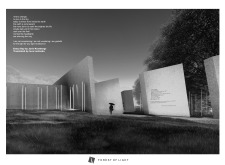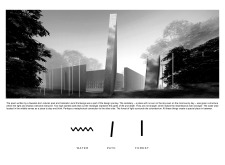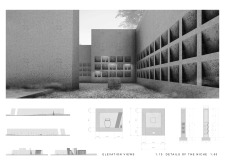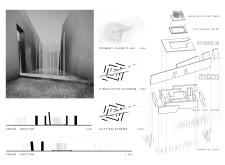5 key facts about this project
The project is an architectural design that embodies functionality and a strong connection to its surroundings. Located in [insert geographical location], the structure integrates seamlessly with the landscape while addressing the needs of its users. The design incorporates a range of materials that enhance both aesthetics and environmental sustainability. The project serves as a multipurpose facility, accommodating [insert specific functions, e.g., community gatherings, offices, educational activities].
The architectural composition features distinct areas that offer both public and private spaces. This is achieved through a thoughtful layout that promotes natural movement and interaction among users. The spatial organization reflects careful consideration of how people will utilize each area, ensuring that the design is both practical and inviting.
Key Structural Elements and Materials The project utilizes reinforced concrete for its structural framework, offering durability and stability. Large glass panels allow for ample natural light and create a visual connection with the exterior environment. The inclusion of wood accents throughout the interiors contributes warmth and texture, making the space more approachable. Steel is employed for structural support as well as to form unique architectural features that enhance the overall design. Stone is used selectively for hardscaping, adding an element of grounding to the building's exterior.
Unique Design Approaches What distinguishes this project from others is its integration of biophilic design principles. The layout deliberately incorporates green roofs and vertical gardens, allowing nature to play a vital role in the user experience. These features not only improve air quality but also provide visual relief and promote wellbeing among occupants. Another notable aspect is the use of passive design strategies, including optimal orientation and shading devices, which contribute to energy efficiency and thermal comfort.
Functional Flexibility The architectural design creates flexible spaces that can adapt to various functions and events. Movable partitions allow for the reconfiguration of rooms, catering to both small meetings and larger gatherings. This adaptability fosters a sense of community, as the spaces can be easily transformed to suit the needs of different user groups. Outdoor areas are designed to complement the indoors, providing additional settings for activities and gatherings, further emphasizing the project’s commitment to community engagement.
To gain deeper insights into the project's architecture, readers are encouraged to explore the architectural plans, sections, and design elements. These resources will provide a comprehensive understanding of how the design is executed and the thought processes behind various architectural ideas.


























